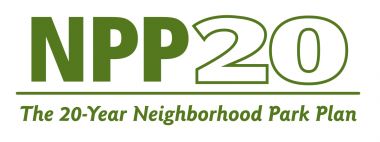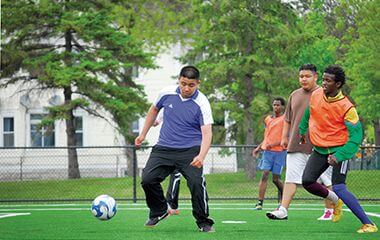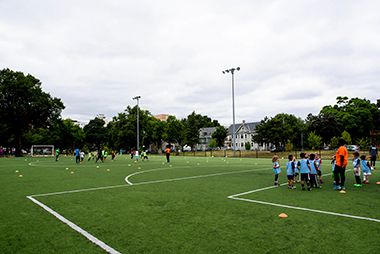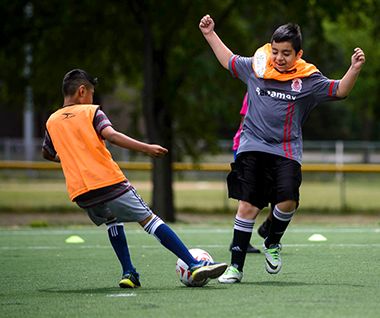Address
2700 S 12th Ave.
Minneapolis, MN 55407
Plan Your Route
Contact
Phone: 612-370-4932
Email: info@minneapolisparks.org
Park Hours
6 am-midnight
Ordinance PB-2-33
Wading Pool Information
Features & Amenities
- Baseball Field
- Drinking Fountain
- Playground/Tot Lot
- Restroom Facility
- Soccer Field
- Softball Field
- Wading Pool
Master Plans
This park will be affected by a completed park or service area master plan. View Master Plans
 Your NPP20 money at work: Maintenance is increasing at all neighborhood parks, thanks to additional annual funding from the 20-Year Neighborhood Park Plan (NPP20). This initiative also funds ongoing rehabilitation and major project to restore neighborhood parks and help address racial and economic equity. Find Out More
Your NPP20 money at work: Maintenance is increasing at all neighborhood parks, thanks to additional annual funding from the 20-Year Neighborhood Park Plan (NPP20). This initiative also funds ongoing rehabilitation and major project to restore neighborhood parks and help address racial and economic equity. Find Out MorePark Details
Rentals & Permits
Athletic Rentals: Call the recreation center directly to reserve a field, court, or rink for a single practice or game. Visit Recreation Center Rentals for details.
Recurring Athletic Rentals: To reserve a field, court, or rink for two or more dates, visit our athletic permit page.
History
Name
The park was named for Levi Stewart an early Minneapolis pioneer and brother of David D. Stewart of St. Albans, Maine who donated part of the land for the park. Levi Stewart was an early settler in the region and owned considerable land in the vicinity of the park. David Stewart, who inherited the land from his brother, also donated the land for Cedar Avenue Field. Before the park was named for Stewart it was called Seventh Ward Playground.
Acquisition and Development
The account of the acquisition of the park in park board proceedings is one of the more unusual stories of park acquisition. The first mention of the land to be acquired was in the minutes of the meeting of November 6, 1911, when the committee responsible for selecting land to be acquired reported that it had been in negotiations for the land for some time and had secured an option to purchase twelve lots for $5,000 and reported that another unplatted parcel of land could be purchased for $6,500. The committee continued that it “had reason to believe” that another six lots would be donated if the rest were acquired at that time. The board immediately authorized payments for the two parcels and, indeed, the remaining six lots were donated by David Stewart. (The official date listed in park board records for the acquisition of the first parcel of land for the park, September 1, 1911, was likely the date the committee signed an option to purchase the twelve lots it mentioned.)
What was odd about the acquisition was that it was not preceded by petitions for a park from residents of the area, as had occurred with nearly every other park purchased—and many plots of land that were not purchased. Instead it came after the board had advertised that it was seeking land for parks in certain areas of southeast, northeast, north and south Minneapolis.
The legislature had approved $50,000 in bonds to be issued by the city in 1911 for playgrounds. The board had decided to spend $45,000 of that sum to acquire land for playgrounds, and held $5,000 in reserve to begin improvements of the new parks. The board was aware of playground deficiencies in many parts of the city, particularly in older neighborhoods. But it was precisely in those neighborhoods that were already mostly developed that it was hardest to find land to buy. So the park board advertised to buy park land in part to find out how far the $45,000 would go. In the end, those funds were used to buy Stewart Field, Sumner Field in north Minneapolis, and the first Longfellow Field also in south Minneapolis. (The Longfellow Field acquired at this time was not the one that exists today. The first park by that name, at 28th Street and Minnehaha Avenue, was sold in 1917. It was replaced with land farther south for a second Longfellow Field.) It’s possible that the land for Stewart Field came to the attention of the park board through the “land wanted” advertisements, which would explain the lack of demand in advance of the park’s purchase.
As with nearly all the land the park board acquired for neighborhood parks at the time, the 3.6 acres of land for Stewart Field needed to be filled to bring it up to street grade. The park board said it needed 9,000 cubic yards of fill to bring the park up to proper elevation so that it would drain. The fill was obtained free through the efforts of alderman and ex-officio park commissioner Maurice McInerny in 1912.
With the land brought up to grade, park superintendent Theodore Wirth presented a plan for the park in the 1912 annual report. It was to be a typical recreation park of the time with ball fields that could be flooded for skating in winter, playgrounds and tennis courts. Wirth also proposed a shelter on 26th Street that was larger than existed in many parks. Still, he proposed a combination gymnasium and meeting room in order to save money and noted that larger social gatherings could be accommodated at Greeley School immediately east of the park. Wirth estimated that it would cost $19,000 to develop the park according to his plan.
Stewart Field received more fill in 1913, but not much else. It wasn’t until 1915 that the filled fields were finally graded for ball fields and a skating rink. Wirth noted in his report of that year that the skating rink was a full two acres and much appreciated by the neighborhood. A portable warming house was provided in the absence of the permanent field house Wirth had planned. Wirth also noted that Stewart Field was one of the larger playgrounds and really needed that fieldhouse. He estimated that the cost of “fullest development” of the park by then had risen to $30,000.
Another change had taken place along with the rising cost of developing the park. Shortly after the park was acquired, using city bonds to pay for it, the park board had adopted a policy that all neighborhood parks would be acquired and improved only if property owners in the neighborhood would agree to assessments on their property over a period of ten years to pay for the park. It was a policy that lasted into the 1960s and led to most neighborhood park developments taking place in the city’s newer or wealthier neighborhoods.
Still with no fieldhouse in sight, the park did get ball fields with backstops in 1916 and trees were planted along the streets surrounding the park.
Three years later, residents in the vicinity of the park petitioned the park board for a shelter, toilets and a drinking fountain in the park, but the park board refused the request without explanation.
In 1921, Wirth presented a new plan for Stewart Field and recommended that it be developed as soon as possible. He suggested that the park board should also acquire the southern half of the block behind Greeley School and close 11th Avenue between the school and park to expand the park and make it more useful to the school. Wirth noted that there were only five houses on the twelve lots behind the school, which he coveted for the park. By closing 11th Avenue it would make the gym in Greeley School more accessible for use by the park board and reduce the need for a fieldhouse in the park. In his new plan, Wirth proposed only a smaller shelter with toilets in the center of the park. Wirth added that in his opinion the neighborhood could afford the assessments required to pay for the improvements.
But nearly thirty more years would pass before any of Wirth’s suggestions were acted on. Other than landscaping improvements in the 1930s by state work relief crews, no improvements were made to the park. The park board had plans drawn in 1938 to improve the park, but like so many plans before they were tucked away without action.
Finally in 1948, one of Wirth’s ideas was acted on: the park board acquired the property south of Greeley School for $106,000 to enlarge the park. However, despite committing funds to expand the park, the board took no action to improve it.
Stewart Field remained much as it had been in the 1910s until 1956 when the board pursued plans to improve the park and split the cost between the neighborhood and the city. In 1957, the board vacated 11th Avenue between the park and school, razed the homes on the land it had bought nine years earlier and renovated the park. Playing fields were rearranged, tennis courts were built, a hard-surfaced play area and wading pool were added, new playground equipment installed, and, finally, a small shelter was built. Park improvements were completed in 1958, forty-seven years after the initial land was acquired.
Major changes were made to the park in 1970s, when the school board built Hans Christian Andersen School just south of the park. The school board needed a bit of park land for the school, because it didn’t want to expand the school southward and have to take out more homes. The park board finally agreed to a plan that encroached only a bit onto park property, but also gained agreement from the school board that the park board could attach a recreation center to the school to take advantage of school facilities. That center was built in 1976-1977 at a time when park facilities were upgraded again.
The park was given a dramatic new face in 1999 when the old shelter was demolished and new play areas and a modern wading pool were built. The renovations were paid for by a combination of Neighborhood Revitalization Program funds and other city, state and federal funds. At that time the park board and school board also agreed to a small land swap, with the park board getting the northeast corner of the park from the school board and the school board acquiring the western edge of the park for a school parking lot. That agreement was formally completed in 2008.
In 2005 when the Minnesota Twins Community Fund, along with Toro and Land O’Lakes companies, financed the creation of the prettiest neighborhood baseball field in the city at the time. The field was named to honor the Twins long-time stadium announcer Bob Casey.
Web-based thermostat controls were installed in the rec center in 2009 to improve energy efficiency.
Another significant improvement to the park occurred in 2011 when synthetic turf was installed on the soccer fields to make them usable more of the year and reduce maintenance costs.
More than 150 trees were planted with the help of student volunteers from nearby Andersen United Community School when the annual Arbor Day celebration was held at the park in 2015.
History through 2008 written by David C. Smith, with updates from 2009 to present written by MPRB.










